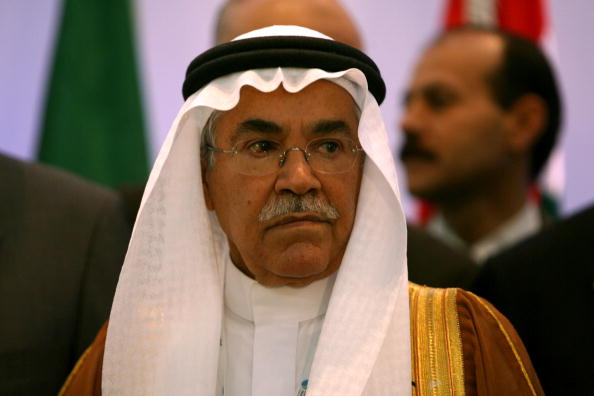OPEC Coasts Towards Deal With Oversupply Fear On Hold
Triple digit oil has encouraged development of U.S. shale oil in North Dakota and Texas, some of which is the most costly in the world.

OPEC, enjoying oil at just over $100 a barrel, looks set to keep its output policy on a steady course for 2013 – leaving clear room for booming U.S. shale supplies.
Saudi Arabia, its top oil producer, has already set the stage for a swift and easy deal when oil ministers meet on Friday and are expected to retain a 30-million barrel-a-day output target.
“Let me tell you this, this is the best environment for the market. Supplies are plentiful, demand is great, balanced – inventories are balanced,” influential Saudi Oil Minister Ali al-Naimi said on Tuesday.
And while the price of oil by historical standards is expensive, it is well below the $125 that rang alarms in major consumer countries last year.
“The current price is fair and reasonable,” UAE Oil Minister Suhail Bin Mohammed al-Mazroui told Reuters on Wednesday.
“It’s been sustained for some time without impacting the economics of the producers and the countries that are buying the crude. It also encourages investment in future supply,” said Mazroui, attending his first meeting of OPEC.
Triple digit oil has also encouraged development of U.S. shale oil in North Dakota and Texas, some of which is the most costly in the world to produce and competes with OPEC crude of similar quality from Nigeria and Algeria, rather than heavier Saudi output.
Innovative use of hydraulic fracturing, or “fracking,” has unlocked new resources of oil and gas trapped in shale rock, putting the United States in line to become the world’s largest oil producer by 2017, overtaking Saudi Arabia
That is not worrisome for Riyadh, especially when it comes to charting policy for the second half of 2013.
“This will be a straightforward meeting leading to a rollover (of the existing output target),” a Gulf OPEC delegate told Reuters. “Shale isn’t an immediate threat or concern for Saudi Arabia.”
And the Kingdom – holder of most spare capacity in the Organization of the Petroleum Exporting Countries – shows no sign of opening the taps to bring down prices and curtail that output by making it uneconomic.
OPEC, which dismissed shale as of little concern a year ago, does not hold a common position on it. While Saudi’s Naimi welcomes it, his Nigerian counterpart Diezani Alison-Madueke has said it will have a “major impact.”
Nigeria, along with Algeria, has already felt the heat from the U.S. oil boom, losing ground in its most lucrative export market and diverting sales to Asia.
Saudi Arabia and the UAE were first to arrive in Vienna, with Iraq, Ecuador and Venezuela expected later on Wednesday. Kuwait is represented by its OPEC governor. The remaining ministers are due on Thursday.
SHALE SHADOW
Some within OPEC are concerned about the potential for both slow global growth and a dramatic rise in U.S. shale oil to send prices tumbling.
The International Energy Agency forecast this month U.S. shale oil supply will help meet most of the world’s new demand in the next five years, leaving little space for OPEC to lift output without risking lower prices.
“We’re heading for a problem in 2014 and we’ll probably have to make a supply cut,” said a senior OPEC source. “And if OPEC were proactive, we’d start to look seriously at individual production allocations.”
But the group that pumps a third of the world’s oil is not known for contingency plans.
OPEC delegates now say this meeting will not be electing a new secretary general – stuck in a logjam of competing candidates from Iran, Iraq and Saudi Arabia – but will merely approve the criteria for prospective candidates to come forward. [ID: nL6N0DI1C0]
And unable for several years to agree individual output quotas, it may need to allocate them if required to cut back heavily and share out reductions.
Until then, Saudi Arabia has assumed the role of market manager – deftly trimming back or raising supply to keep markets in balance and oil at around $100 a barrel.
The shale revolution in the United States, still the world’s biggest oil consumer ahead of China by a wide margin, has raised hopes among importers that the relentless rise in fuel prices over the past decade may be at an end.
By the end of last year, the United States had recorded the biggest annual increase – 850,000 bpd – in oil output since it first pumped oil in the early 1860s.
Though not in direct response to shale, Riyadh has cut back from a record high reached in 2012 of 10 million bpd to pump 9.3 million bpd in April.
That put OPEC production at 30.46 million bpd, right in line with its calculations for average demand for the group’s crude in the second half of the year.
Price hawks Iran, Algeria and Venezuela – among those with the highest budget breakeven oil prices in OPEC – may still call for supply cuts.
Yet Venezuela, at least, looks set to keep the status quo. Oil Minister Rafael Ramirez has said he will propose that OPEC keep oil production quotas unchanged.
